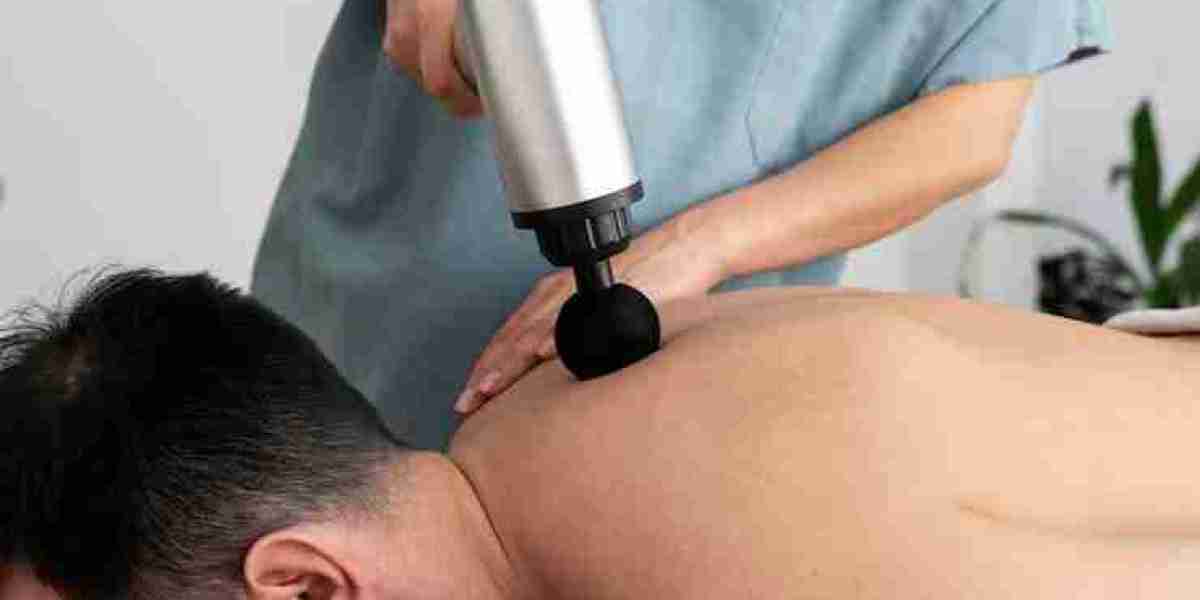Massage gun therapy has rapidly gained popularity among athletes, fitness enthusiasts, and those seeking relief from muscle tension. These handheld devices, designed to deliver percussive therapy, provide deep muscle relief and enhance recovery. This article explores the science behind massage gun therapy, its benefits, how to use it effectively, and potential drawbacks, while emphasizing its role in a comprehensive recovery routine.
Understanding Massage Gun Therapy
Massage guns are portable devices that use rapid bursts of pressure to penetrate deep into muscle tissue. By delivering percussive vibrations, they stimulate blood circulation, reduce muscle stiffness, and promote relaxation. This technique is often referred to as percussive therapy, and it has become a staple in sports and rehabilitation settings.
The Mechanism of Percussive Therapy
When a massage gun is applied to a muscle, it creates a rhythmic pounding effect. This action helps to:
Increase Blood Flow: The rapid movement encourages blood circulation, which helps deliver oxygen and nutrients to muscles while flushing out metabolic waste.
Reduce Muscle Soreness: By breaking up knots and trigger points in the muscle, the therapy can alleviate soreness and tightness.
Improve Flexibility: The percussive action helps to loosen tight muscles and fascia, increasing range of motion and flexibility.
Stimulate the Nervous System: The vibrations can activate the nervous system, enhancing muscle responsiveness and coordination.
Benefits of Massage Gun Therapy
1. Effective Muscle Recovery
One of the primary advantages of massage gun therapy is its ability to accelerate muscle recovery. After intense workouts, muscles can experience micro-tears that lead to soreness. Using a massage gun can help alleviate this discomfort, allowing athletes to return to their training routines more quickly.
2. Pain Relief
Massage gun therapy is effective in managing pain, particularly for individuals suffering from chronic conditions such as lower back pain, fibromyalgia, or tension headaches. The deep tissue stimulation can help relax tight muscles, providing immediate relief.
3. Increased Range of Motion
Regular use of a massage gun can enhance flexibility and range of motion. By targeting specific muscle groups, it helps to release tension and improve overall mobility. This is particularly beneficial for athletes who require optimal movement for performance.
4. Convenience and Portability
Unlike traditional massage therapy, which often requires scheduling appointments, massage guns are convenient and portable. Individuals can use them at home, at the gym, or even while traveling. This accessibility allows for regular use, maximizing the benefits of percussive therapy.
5. Customizable Treatment
Massage guns come with multiple attachments and speed settings, allowing users to customize their treatment based on personal preferences and specific muscle needs. This versatility enables individuals to address various issues, from deep tissue relief to gentle muscle relaxation.
How to Use a Massage Gun Effectively
1. Identify Target Areas
Before using a massage gun, it’s essential to identify the areas that need attention. Focus on muscle groups that feel tight or sore, such as the back, shoulders, quads, or calves.
2. Choose the Right Attachment
Most massage guns come with different attachments designed for specific purposes. For example:
- Flat Head: Ideal for large muscle groups.
- Ball Head: Great for general use and larger areas.
- Fork Head: Effective for targeting the spine and neck.
- Soft Foam Head: Best for sensitive areas or beginners.
3. Start Slow
Begin with a low-speed setting to gauge your comfort level. Gradually increase the speed as your muscles acclimate to the percussive therapy. It’s essential to listen to your body and adjust the intensity accordingly.
4. Use Proper Technique
Hold the massage gun at a 90-degree angle to the muscle you are targeting. Move the device slowly over the muscle, spending extra time on tight spots or knots. Avoid applying too much pressure, as this can lead to discomfort.
5. Limit Duration
Each muscle group should be treated for about 30 seconds to 2 minutes. Spending too much time on one area can lead to soreness, so it’s important to maintain a balanced approach.
6. Post-Treatment Care
After using the massage gun, stretch the targeted muscles to enhance flexibility and promote recovery. Hydration is also crucial, as drinking water helps flush out toxins released during the massage.
Potential Drawbacks of Massage Gun Therapy
1. Risk of Overuse
While massage gun therapy offers numerous benefits, it’s essential to avoid overuse. Prolonged or excessive use can lead to muscle soreness or bruising. It’s important to use the device in moderation and allow time for muscles to recover.
2. Not Suitable for Everyone
Individuals with certain medical conditions, such as severe osteoporosis, fractures, or open wounds, should consult a healthcare provider before using a massage gun. Pregnant women and those with specific chronic conditions should also seek professional advice.
3. Technique Matters
Improper use of a massage gun can lead to injury or exacerbation of existing issues. It’s important to learn the correct techniques and pay attention to body cues during treatment.
4. Limited Effectiveness for Deep Tissue Issues
While massage guns are effective for relieving muscle tension, they may not reach deeper layers of tissue as effectively as manual massage techniques performed by trained therapists. For some individuals, a combination of both methods may yield the best results.
Integrating Massage Gun Therapy into Your Recovery Routine
1. Combine with Other Recovery Methods
For optimal recovery, massage gun therapy can be combined with other techniques such as stretching, foam rolling, and hydration. Incorporating various methods can enhance overall recovery and performance.
2. Schedule Regular Sessions
To maximize the benefits, consider incorporating massage gun therapy into your regular routine. Whether used pre-workout as a warm-up or post-workout for recovery, consistency is key.
3. Listen to Your Body
Each individual’s response to massage gun therapy may vary. It’s crucial to listen to your body, adjusting usage based on comfort and recovery needs. If pain persists or worsens, it’s advisable to seek professional guidance.
Conclusion
Massage gun therapy has emerged as a powerful tool for deep muscle relief, offering numerous benefits for athletes and fitness enthusiasts alike. From enhanced recovery and pain relief to increased flexibility, these devices provide a convenient and effective way to address muscle tension. However, it’s essential to use them correctly and in moderation to avoid potential drawbacks.
As individuals strive for optimal performance and recovery, incorporating massage gun therapy into their routines can yield significant benefits. For those looking to enhance their recovery journey, Prime Recovery is here to support you every step of the way. Discover the transformative power of massage gun therapy and elevate your wellness today!








